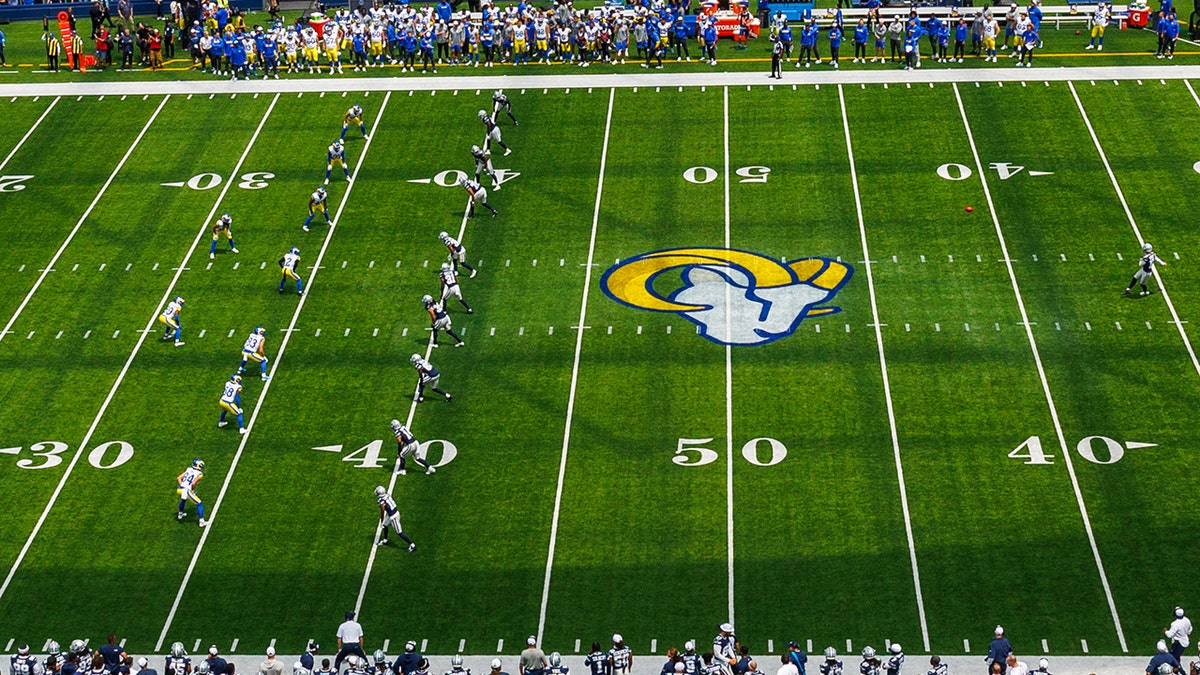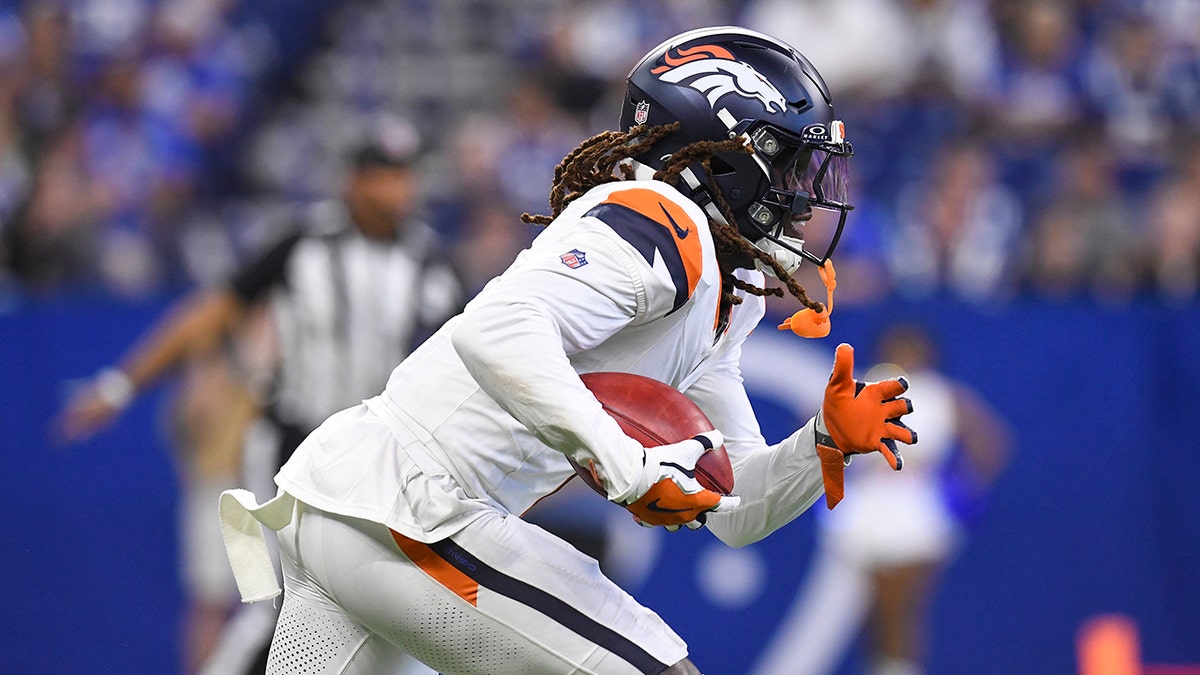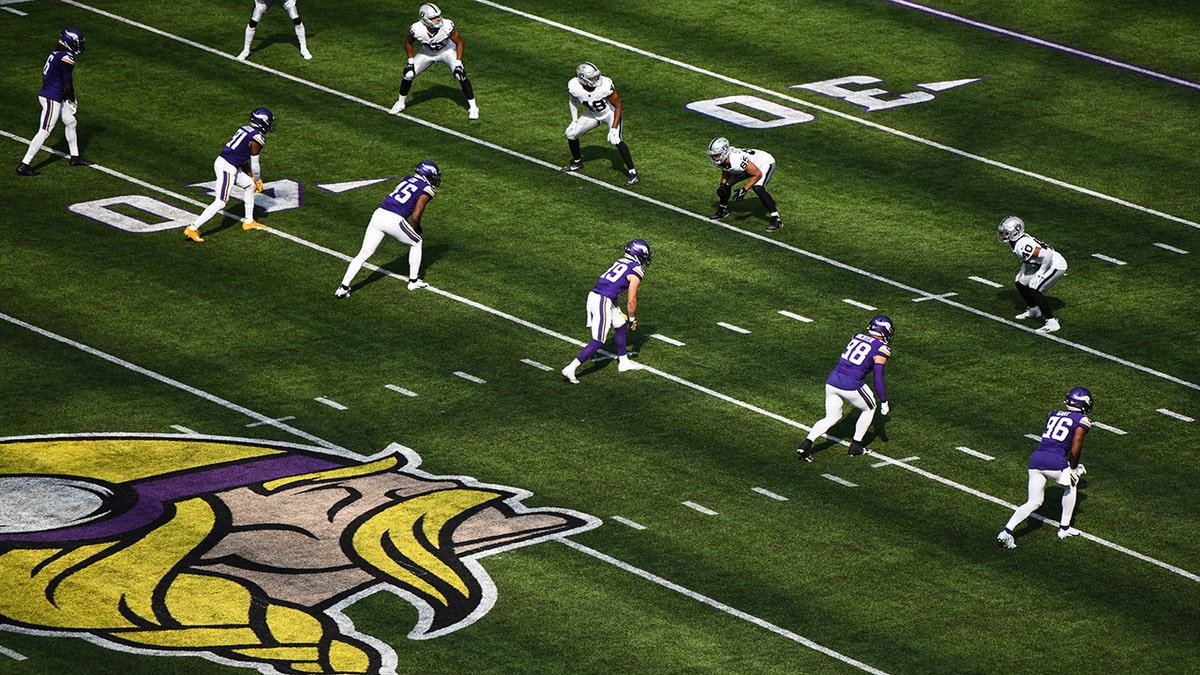NFL’s Dynamic Kickoff: Explaining new rules heading into 2024 season
With preseason games already underway in the 2024 NFL season, fans are getting to see what the new Dynamic Kickoff looks like in action.
As fans have seen in these early instances, players are still trying to get used to the new rules, let alone fans trying to understand them at home.
So, before every play starts to really count in the NFL season, let’s break down how the new kickoff, “borrowed” from the XFL, will play out.
CLICK HERE FOR MORE SPORTS COVERAGE ON FOXNEWS.COM

New NFL kick-off rules are in place during the opening kick-off of the Rams game against the Dallas Cowboys at SoFi Stadium on Aug. 11, 2024 in Inglewood, California. (Gina Ferazzi / Los Angeles Times via Getty Images)
Setting it up
First, the ball is still to be kicked from the team’s own 35-yard line, and kicks following a safety will be from the 20-yard line. That part of the kickoff has not changed, but the alignment is vastly different.
As fans may have seen during preseason games, all kicking team players will be lined up with one foot on the receiving team’s 40-yard line. However, unlike the usual start of motion after the kicker makes contact with the football, the kicking team players must wait until the ball hits the ground or the player in the landing zone or end zone.
The landing zone is from the receiving team’s 20-yard line until the goal line.
NFL OWNERS APPROVE MASSIVE OVERHAUL OF KICKOFF RULES
For the receiving team, their “setup zone” will be a five-yard area from the 35-yard line to the 30-yard line, where at least nine players must line up facing the kicking team.
There, at least seven of those nine players must have a foot on the 35-yard line. Those not on the 35-yard line will need to be in the setup zone outside the hash marks. Additionally, like the kicking team, the receiving team players cannot move until the kick has hit the ground or a player in the landing zone or the end zone.
Finally, there can only be a maximum of two returners during these kickoffs, and they are free to move at any point during the play.
Landing zone, explained
The landing zone, again from the goal line to the 20-yard line, provides some different rules that special teams coordinators will try to use to their advantage instead of blasting the ball out of bounds every time.
First, NFL fans know what happens when the ball is kicked out of the back of the end zone and the same thing applies here: touchback. However, the ball will be spotted at the 30-yard line – not the 25.

Denver Broncos cornerback Tremon Smith, #1, returns a kickoff during the NFL Preseason game between the Denver Broncos and the Indianapolis Colts on Aug. 11, 2024, at Lucas Oil Stadium in Indianapolis. (Michael Allio/Icon Sportswire via Getty Images)
For the return team, though, any kick that hits within the landing zone must be returned. However, if it hits in the landing zone and goes back into the end zone, the receiving team has the choice to down it and the ball will be placed at the 20-yard line.
If a kick hits the end zone, stays in bounds and is ruled a touchback, the ball will be placed at the 30-yard line. The same counts for the ball flying out the back of the end zone in the air or bouncing.
What is the reason for the different touchbacks? Promoting more returns.
Also, any kick that falls short of the landing zone will be treated like the kick went out of bounds, meaning the ball is spotted at the 40-yard line for the offense to start its drive. In short, kickers need to avoid this at all costs.
Because of the landing zone, kickers may be focused more on precision than strength with their kickoffs to ensure the receiving team runs them back to improve ball placement.
Fans have already seen special teams coordinators trying to bend their strategies a bit this preseason to see what might work.
What about penalties?
There are many instances during the NFL season where penalties are enforced during kickoffs.
How does that affect special teams in this new dynamic format? Well, the same thought process applies in terms of encouraging returns.
The setup zone and landing zone will not change for kickoffs. Instead, only the spot of the kick will be affected.

Minnesota Vikings and Las Vegas Raiders players line up for the kickoff in the second half of the preseason game at U.S. Bank Stadium on Aug. 10, 2024 in Minneapolis. The NFL is debuting a new rule on kickoffs this season. (Stephen Maturen/Getty Images)
CLICK HERE TO GET THE FOX NEWS APP
So, the kicker will be the only one moving back from the 35-yard line. In turn, it will make it harder for him to get the ball inside the landing zone, but the other players on the field are in their normal sports.
What is also different is that penalties on scoring plays will not carry over. Instead, it will be taken on the try attempt for one or two points.
Follow Fox News Digital’s sports coverage on X, and subscribe to the Fox News Sports Huddle newsletter.
